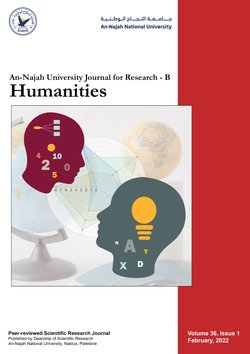Turkish-Iranian Rivalry in the Middle East
Authors:
Article info
2019-03-25
2019-07-09
871 - 900
Keywords
- Competition
- Middle East.
- Iran
- Turkey
Abstract
This study entitled "The Turkish-Iranian rivalry in the Middle East" aimed to investigate the political transformations in the region which led to increasing this competition and its relevance to the political, military and geopolitical importance of the region. The study considered the projects and the roles of Turkey and Iran and its impact on the Middle East, so that it began from the hypothesis that the existence of two ideologically different forces that have a somewhat similar capabilities enable both to compete in the region, and from another hypothesis that this competition adversely affects the region by weakened the loyalties of some ideological movements to their countries and proved to have new ideologies. The validity of these two hypotheses has been proven. A research constraint is the presence of a lack of clarity to understand the nature of the relationship between Turkey and Iran in the region and what are the foundations and pillars of this relationship. The study answered number of questions raised in terms of the nature of the relationship and what are the determinants and reasons that created this competition between the two countries using the decision-making approach in explaining the nature of the political circumstances surrounding the decision-making environment in both countries and the analytical descriptive approach in clarifying and explaining the nature of this relationship which led to the dimensions of this competition. It also used the game theory to show the factors of strength and weakness between Iran and Turkey and the theory of realism in determining the behavior of the state in terms of power and interest for each of the two countries. A number of recommendations and results have emerged from this study.
Al-Halalima, A.-H. (2021). Turkish-Iranian Rivalry in the Middle East. An-Najah University Journal for Research - B (Humanities), 35(6), 871–900. https://doi.org/10.35552/0247-035-006-001
[1]A.-H. Al-Halalima, “Turkish-Iranian Rivalry in the Middle East,” An-Najah University Journal for Research - B (Humanities), vol. 35, no. 6, pp. 871–900, Jun. 2021, doi: 10.35552/0247-035-006-001.
Al-Halalima, Al-Hareth. “Turkish-Iranian Rivalry in the Middle East.” An-Najah University Journal for Research - B (Humanities), vol. 35, no. 6, June 2021, pp. 871–900. Crossref, https://doi.org/10.35552/0247-035-006-001.
1.Al-Halalima AH. Turkish-Iranian Rivalry in the Middle East. An-Najah University Journal for Research - B (Humanities) [Internet]. 2021 Jun;35(6):871–900. Available from: http://dx.doi.org/10.35552/0247-035-006-001
Al-Halalima, Al-Hareth. “Turkish-Iranian Rivalry in the Middle East.” An-Najah University Journal for Research - B (Humanities) 35, no. 6 (June 2021): 871–900. https://doi.org/10.35552/0247-035-006-001.
التنافس التركي الإيراني في منطقة الشرق الأوسط
المؤلفون:
معلومات المقال
2019-03-25
2019-07-09
871 - 900
الكلمات الإفتتاحية
- Competition
- Middle East.
- Iran
- Turkey
الملخص
جاءت هذه الدراسة بعنوان "التنافس التركي الإيراني في منطقة الشرق الأوسط" وذلك بدراسة التحولات السياسية في المنطقة والتي أدت إلى زيادة هذا التنافس ومدى ارتباطه بالأهمية السياسية والعسكرية والجيوبولوتيكية للمنطقة بحيث قامت الدراسة على فهم هذه المشاريع والأدوار لكل من تركيا وإيران وأثر ذلك على منطقة الشرق الأوسط، بحيث انطلقت الدراسة من فرضية مفادها أنَّ وجود قوتين مختلفتين أيدولوجياً ويمتلكان قدرات متشابهة إلى حدٍ ما يمكنهم من التنافس في المنطقة، ومن فرضية أخرى ترى أنَّ هذا التنافس له أثر سلبي على المنطقة بحيث أضعف من ولاءات بعض التيارات الأيدولوجية لدولها وأصبح لها انتماؤها الفكري والأيدولوجي، وقد ثبتت صحة الفرضيتين، ومن مشكلة بحثية بوجود حالة من عدم الوضوح لفهم طبيعة العلاقة بين تركيا وايران في المنطقة وما هي منطلقاتها وركائزها، وأجابت الدراسة على عدد من التساؤلات المثارة من حيث ماهية طبيعة العلاقة وما هي المحددات والأسباب التي أوجدت هذا التنافس بين الدولتين، مستخدماً منهج صنع القرار في بيان طبيعة الظروف السياسية المحيطة ببيئة صانع القرار في كلا الدولتين، والمنهج الوصفي التحليلي في توضيح وشرح طبيعة هذه العلاقة التي أدت إلى محاور هذا التنافس، كما استخدمت في إطارها النظري نظرية اللعبة والتي بيَّنت محاور القوة والضعف التي وضحت أوجه هذا التنافس بين إيران وتركيا والنظرية الواقعية في تحديد سلوك الدولة من حيث عامل القوة والمصلحة لكل من الدولتين كما خرجت الدراسة بعددٍ من التوصيات والنتائج.
Al-Halalima, A.-H. (2021). Turkish-Iranian Rivalry in the Middle East. An-Najah University Journal for Research - B (Humanities), 35(6), 871–900. https://doi.org/10.35552/0247-035-006-001
[1]A.-H. Al-Halalima, “Turkish-Iranian Rivalry in the Middle East,” An-Najah University Journal for Research - B (Humanities), vol. 35, no. 6, pp. 871–900, Jun. 2021, doi: 10.35552/0247-035-006-001.
Al-Halalima, Al-Hareth. “Turkish-Iranian Rivalry in the Middle East.” An-Najah University Journal for Research - B (Humanities), vol. 35, no. 6, June 2021, pp. 871–900. Crossref, https://doi.org/10.35552/0247-035-006-001.
1.Al-Halalima AH. Turkish-Iranian Rivalry in the Middle East. An-Najah University Journal for Research - B (Humanities) [Internet]. 2021 Jun;35(6):871–900. Available from: http://dx.doi.org/10.35552/0247-035-006-001
Al-Halalima, Al-Hareth. “Turkish-Iranian Rivalry in the Middle East.” An-Najah University Journal for Research - B (Humanities) 35, no. 6 (June 2021): 871–900. https://doi.org/10.35552/0247-035-006-001.
An-Najah National University
Nablus, Palestine
Nablus, Palestine
- P.O. Box
- 7, 707
- Fax
- (970)(9)2345982
- Tel.
- (970)(9)2345560
- (970)(9)2345113/5/6/7-Ext. 2628
- [email protected]
- EIC
- Prof. Ismail Warad
